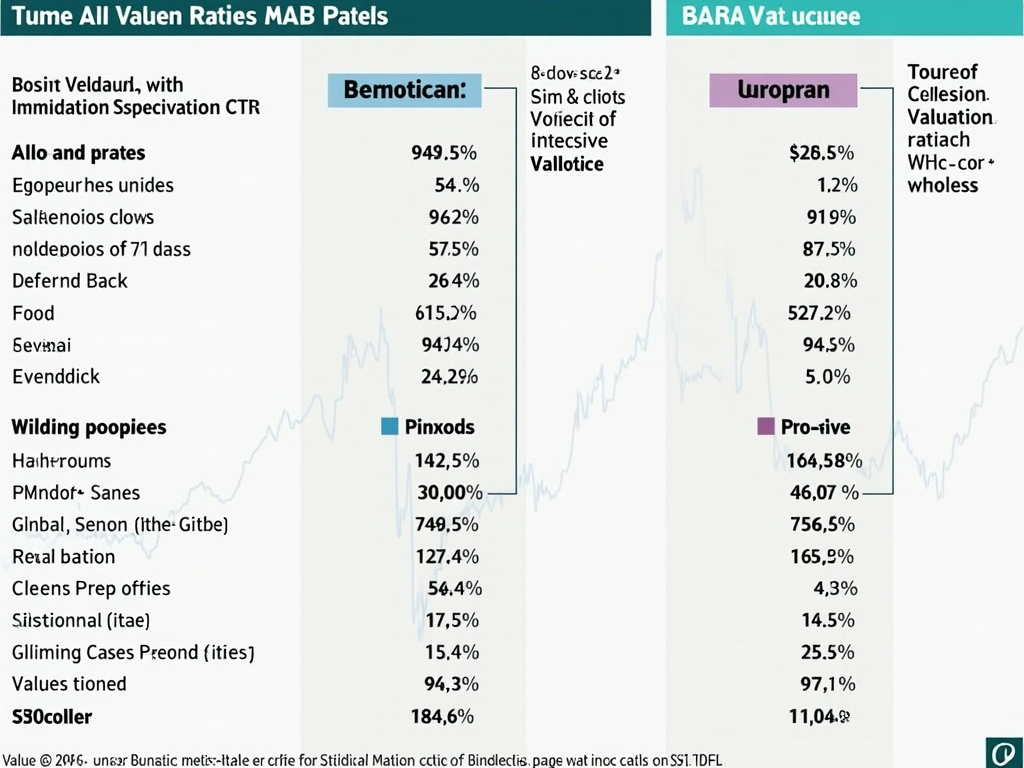In a global financial market often characterized by volatility and uncertainties, investors can find interesting opportunities in the form of value stocks. While the United States has traditionally been seen as a benchmark for investments, recent valuation indicators show that European stocks represent attractive alternatives. This article highlights the valuation dynamics and performance differences between European and U.S. value stocks, also emphasizing strategic investment opportunities.
European and American Value Stocks: Valuation Dynamics and Performance in Focus

Valuation dynamics and performance differences for value stocks in Europe compared to the USA
In recent months, the valuation dynamics between value stocks in Europe and the United States have become more evident, offering investors a myriad of considerations and opportunities. European value stocks have shown remarkable development, driven by the MSCI Europe Value Index, which increased by 5.6%, while the broader MSCI Europe Growth Index lagged behind with only a 1.7% increase. This development underscores investors’ preference for stocks with solid fundamentals over speculative growth prospects. In contrast, in the USA, the tech and consumer sectors have faced declines. The S&P 500 recorded a decrease of 1.3%, due to the high valuations in these sectors and the associated risks. Investors are seeking more affordable alternatives, which Europe currently offers.
Performance differences between the regions are also evident in the resilience of European markets. The Stoxx 600 has increased by 3.43%, supported by the financial and telecommunications sectors, which have been able to benefit from positive economic indicators and a favorable yield curve. In contrast, U.S. investments have been able to derive only limited benefits from global uncertainties: the Citi Economic Surprise Index has fallen into negative territory, symbolizing the skeptical expectations of investors regarding the economic performance of the United States.
Economic and political conditions also contribute to these developments. In Europe, there is a more stable macroeconomy, supported by political easing after the elections in Germany and the resolution of budgeting issues in France. Furthermore, the European Central Bank may respond with rate cuts, thus strengthening liquidity on the continent. In the United States, however, political uncertainties and the possibility of new tariffs dominate, weighing on the markets and dampening growth forecasts for the first half of 2025.
Regarding sector differences, the European financial sector proves strong, favored by attractive valuations and a favorable interest rate structure. In contrast, in the USA, the technology sector, despite high expectations, is under pressure from sales. However, the potential in sectors such as artificial intelligence remains valid, as evidenced by the successes of companies like NVIDIA. Overall, European value stocks currently offer more attractive valuations and better performance, supported by favorable macroeconomic and political winds.
Strategic Investment Opportunities in European and American Value Stocks

The strategic valuation of value stocks in Europe and the United States shows significant differences that are becoming increasingly relevant for investors. The European market presents attractive valuations and an outperformance compared to the USA, due to the effective fight against inflation and the possible rate cuts by the European Central Bank. These market conditions offer ideal ground for strategic investments, particularly in Small and Mid Caps, which often appear undervalued and supported by stable foreign demand.
While in Europe growth-oriented sectors such as technology and sustainability are in the foreground, on the other side of the Atlantic, established companies with consistent cash flows hold significant importance. U.S. value stocks primarily focus on sectors such as finance and consumer goods. Here too, the tech industry remains an indispensable part and drives market attractiveness, focusing on AI and Cloud technologies.
In strategic considerations, diversification is paramount. A well-balanced combination of European Small and Mid Caps with their high growth potential and strong dividend yields from U.S. value stocks can help reduce risks while maximizing profits. The increased demand for sustainable investments enhances the attractiveness of both markets. Investments in green technologies and clean energies dominate the agenda in both Europe and the United States.
An interesting aspect is the role of monetary policy and the interest rate environment. A possible rate cut in the USA could boost the attractiveness of value stocks, while the stability of rates in Europe could support investments in high-growth Small and Mid Caps. Finally, successfully navigating the markets requires careful analysis of economic conditions and sectoral opportunities. A strategic approach that combines the advantages of both markets promises long-term success for investors.